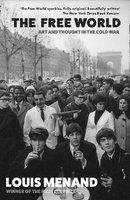New, Quality Gift Books - 50-90% off - over 2500 titles
Your basket is empty.
Categories Last Chance to buy! VANGUARD OF THE REVOLUTION
VANGUARD OF THE REVOLUTION
Book number: 93506
Product format: Hardback
In stock
Bibliophile price
£8.00
Published price
£30
Customers who bought this product also bought
|
|
FREE WORLD: Art and Thought In The Cold War
Book number: 93157
Product format: Hardback
Bibliophile price
£5.00
Published price
£30
|
EDINBURGH IN THE GREAT WAR
Book number: 93221
Product format: Paperback
Bibliophile price
£3.00
Published price
£12.99
|
|
FIGHTING FOR YOUR LIFE: A Paramedic's Story
Book number: 94817
Product format: Paperback
Bibliophile price
£4.50
Published price
£8.99
|
YELLOW BIRD SINGS
Book number: 94591
Product format: Paperback
Bibliophile price
£2.50
Published price
£8.99
|
|
Browse these categories as well: Last Chance to buy!, Religion & Philosophy, Psychology & Sociology







